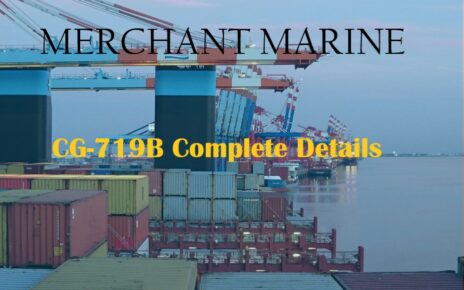Torsion box in container ship helps in countering the torsion forces being developed. Let’s read this article in detail.
Torsion box in container ship
Container ships are a type of cargo vessels that are designed to carry standardized containers of various sizes and shapes. These containers can be easily loaded and unloaded from the ship using cranes or other equipment and can be transferred to other modes of transport such as trucks, trains or planes. Containerization has revolutionized the global trade by reducing the cost, time and risk of transporting goods across long distances.
However, container ships also face some unique challenges due to their design and operation. One of these challenges is torsion, which is a twisting force that acts on the ship’s hull when it encounters uneven waves or loads. Torsion can cause deformation, cracking or even failure of the ship’s structure if it is not properly resisted.

What causes torsion in container ships?
Torsion in container ships is mainly caused by two factors: wave-induced torsion and still-water torsion.
Wave-induced torsion occurs when the ship sails at an oblique angle to the waves, which creates different hydrodynamic pressures on the port and starboard sides of the hull. This results in a twisting moment that tries to rotate the ship around its longitudinal axis.
Still-water torsion occurs when the ship carries an asymmetric load of containers on its deck or in its holds. This creates an imbalance of weight distribution on the port and starboard sides of the hull, which also generates a twisting moment.
Both wave-induced and still-water torsion can vary depending on the sea state, weather conditions, speed and direction of the ship, as well as the loading pattern and arrangement of containers.
What is a torsion box?
A torsion box is a structural feature that helps to resist torsion in container ships. It is a continuous box-like structure that runs along the entire length of the ship from bow to stern. It consists of three main components:
– The freeboard deck (the uppermost deck exposed to weather)
– The longitudinal bulkhead (a vertical partition that divides the ship into port and starboard halves)
– The sheer strake (the uppermost edge of the side shell plating)
The torsion box acts like a closed tube that increases the stiffness and strength of
the hull girder against twisting forces. It also reduces warping stresses at
the corners of large hatch openings where torsional rigidity is low.
How does a torsion box work?
A torsion box works by transferring some of the twisting forces from one side
of the hull to the other through shear stresses along its walls. For example, if
the port side of the hull experiences higher pressure than the starboard side due to waves or loads, this will create a clockwise twisting moment on the hull girder.
The freeboard deck will tend to bend downwards on the port side and upwards on
the starboard side, while the longitudinal bulkhead will tend to bend sideways towards the port side. The sheer strake will resist this bending by acting like a flange that connects the freeboard deck and the longitudinal bulkhead.
The shear stresses along the sheer strake will transfer some of the clockwise twisting moment from the port side to the starboard side, thus reducing the net twisting moment on the hull girder.
The effectiveness of a torsion box depends on several factors such as its dimensions, thickness, stiffness, and material properties. A larger, thicker, and stiffer torsion box will provide more resistance against torsional moments than smaller, thinner, and weaker one.
However, a larger, thicker, and stiffer torsion box will also add more weight and cost to the ship’s construction and maintenance.
Why are torsion boxes important for container ships?
Torsion boxes are important for container ships because they enhance their safety, reliability, and performance under various operating conditions.
By resisting torsional moments effectively, torsion boxes prevent excessive deformation or damage to the ship’s structure that could compromise its integrity or stability. They also reduce vibrations or noise levels that could affect crew comfort or machinery efficiency. Moreover, torsion boxes enable container ships to carry larger loads with more flexibility without sacrificing structural strength or safety margins.



